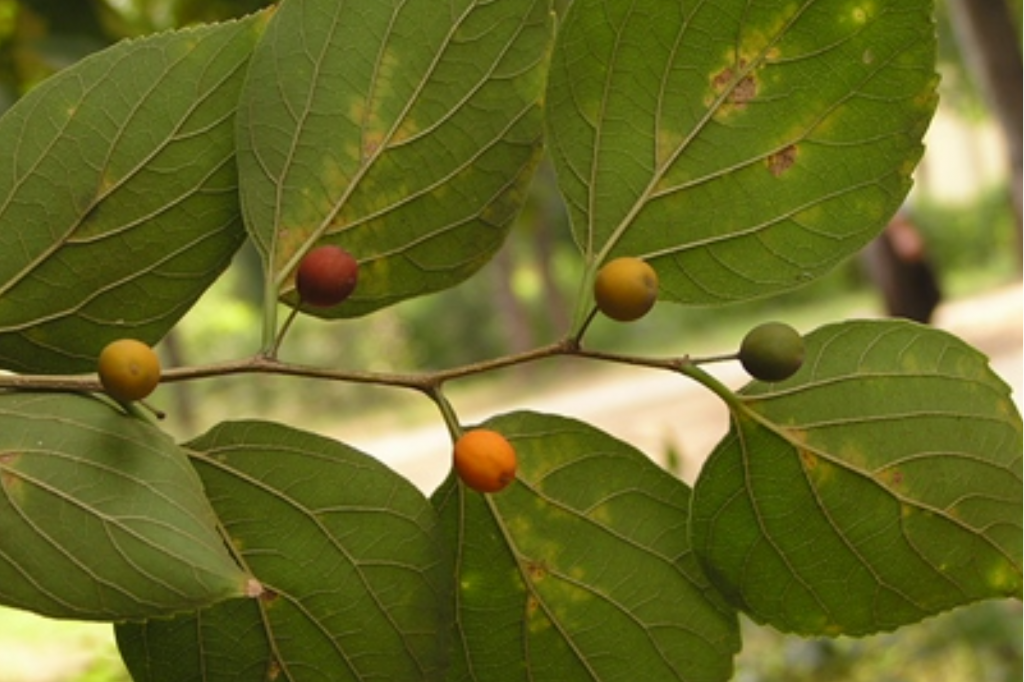Celtis reticulata seed

Celtis reticulata: Description, Uses, and Benefits
Introduction
Celtis reticulata, commonly known as Netleaf Hackberry, is a deciduous tree native to the southwestern United States and northern Mexico. This long-lived tree belongs to the Elm family (Ulmaceae) and is noted for its resilience to challenging environments. It thrives in riparian zones, along stream banks, and on hillsides, often enduring drought and flooding conditions【11】【12】.
Description
Netleaf Hackberry typically grows to a height of 20-25 feet (6-7.5 meters) with a similar spread. Its smooth gray bark develops fissures and ridges as it matures. The leaves are coarse and sandpaper-like, with a distinctive netted vein pattern, giving the species its name. During spring, the tree produces inconspicuous green flowers, which give way to small orange-red drupes in the fall. These fruits are a vital food source for birds and other wildlife【12】【13】.
Ecological Significance
Wildlife Habitat:
The fruits of Celtis reticulata are consumed by numerous bird species and mammals, while its foliage serves as a host for butterflies like the Hackberry Emperor and American Snout【11】【13】.
Environmental Restoration:
Due to its drought tolerance and ability to thrive in poor soils, the tree is often used in land restoration projects, particularly in arid regions. It stabilizes soil, reduces erosion, and supports biodiversity【12】.
Cultural and Traditional Uses
Food:
Indigenous peoples, including the Apache and Acoma tribes, historically used the berries as a food source. The fruits were ground into a paste, dried, or baked into cakes for storage【12】.
Crafts and Tools:
The bark was used by the Papago people to make sandals, while its wood served as handles for tools and fuel【12】.
Dye Production:
The Navajo people boiled the leaves and branches to produce red or dark brown dyes used in wool dyeing【12】.
Modern Applications
Landscaping:
Netleaf Hackberry is valued in urban and rural landscapes for its hardiness. It thrives in full sun, tolerates various soil types (including alkaline and sandy soils), and resists common pests like Texas root rot. Its ability to withstand heat, drought, and occasional flooding makes it an excellent choice for retention basins and arid gardens【13】.
Wildlife Gardening:
The tree attracts birds, butterflies, and other pollinators, making it a popular choice for wildlife-friendly landscapes.
Cultivation and Maintenance
Celtis reticulata requires minimal maintenance once established. It grows best in USDA Hardiness Zones 5–9 and adapts to various soil pH levels. The tree’s moderate growth rate and ability to reseed naturally contribute to its longevity in landscapes【12】【13】.
Conclusion
Celtis reticulata is more than just a resilient tree—it is a cornerstone of southwestern ecosystems, offering ecological, cultural, and practical benefits. Its ability to adapt to harsh conditions while supporting wildlife makes it an indispensable resource for conservation and landscaping efforts. With a deep-rooted history of use by indigenous peoples and modern applications, the Netleaf Hackberry continues to be a vital species in its native habitats.
